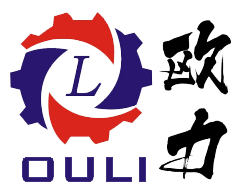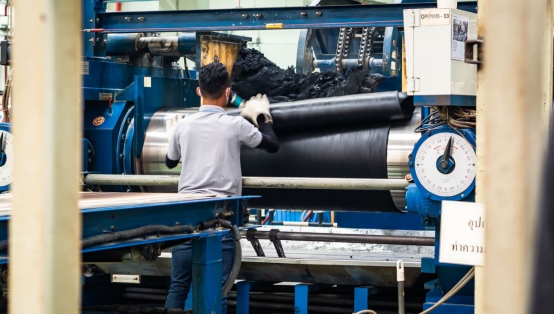1. Make preparations
Leather wrist guards must be worn before starting the mixing machine, and masks must be worn during mixing operations. Waist ties, belts, rubber, etc. must be avoided. Clothing operations are strictly prohibited. Check carefully whether there is any debris between the large and small gears and rollers. When starting each shift for the first time, the emergency braking device must be pulled to check whether the braking is sensitive and reliable (after emptying, the front roller must not rotate more than a quarter of a turn). It is strictly forbidden to use the emergency braking device to shut down the mill during normal operation. If two or more people are operating together, they must respond to each other and confirm that there is no danger before driving.
The temperature rise rate must be controlled when preheating the roller. Especially in the cold winter in the north, the outside of the roller is consistent with the room temperature. High-temperature steam is suddenly introduced into the roller. The temperature difference between the inside and outside may be more than 120°C. The temperature difference causes excessive stress on the roller. . If rubber is added too early, the roller will be easily damaged under the superposition of lateral pressure. For safety reasons, the vehicle should be preheated when empty and this needs to be emphasized to the operator.
The rubber material should also be checked before feeding. If it is mixed with hard metal debris, it will be thrown into the rubber mixing machine with the rubber, resulting in a sudden increase in lateral pressure and easy damage to the equipment.
2. Correct operation
First, the roller distance must be adjusted to maintain the balance of the roller distance. If the roller distance adjustment at both ends is different, it will cause the roller to be unbalanced and easily damage the equipment. This is strictly prohibited. It is customary to add materials from the power input end. In fact, this is unreasonable. Looking at the bending moment diagram and torque diagram, the feed should be at the speed ratio gear end. Since the resultant bending moment and torque at the transmission end are greater than those at the speed ratio gear end, adding a large piece of hard rubber to the transmission end will of course make it easier to damage the equipment. Of course, don’t add large pieces of hard rubber to the middle section of the roller first. The resulting bending moment here is even greater, reaching 2820 tons centimeters. The amount of feeding should be gradually increased, the weight of the feeding block should not exceed the regulations in the equipment instruction manual, and the feeding sequence should be added from small to large. Sudden addition of large pieces of rubber material into the roller gap will cause overloading, which will not only damage the safety gasket, but also endanger the roller once the safety gasket fails.
When operating, you must first cut (cut) the knife, and then use your hand to take the glue. Do not pull or pull the film hard before it is cut (cut). It is strictly prohibited to feed material on the roller with one hand and receive material under the roller with one hand. If the rubber material jumps and is difficult to roll, do not press the rubber material with your hands. When pushing material, you must make a half-clenched fist and do not exceed the horizontal line at the top of the roller. When measuring the temperature of the roller, the back of the hand must be in the opposite direction to the rotation of the roller. The cutting knife must be placed in a safe place. When cutting rubber, the cutting knife must be inserted into the lower half of the roller. The cutting knife must not be pointed in the direction of one’s own body.
When making triangular rubber compound, it is prohibited to operate with a knife. When making rolls, the weight of the film must not exceed 25 kilograms. During the operation of the roller, the hot roller suddenly cools down. That is, when the roller temperature is found to be too high, the hydraulic dynamometer suddenly supplies cooling water. Under the combined action of lateral pressure and temperature difference stress, the roller blade will be damaged. Therefore, cooling should be carried out gradually, and it is best to cool down with an empty vehicle. During the operation of the roller, if it is found that there is debris in the rubber material or in the roller, or there is glue accumulation on the baffle, etc., it must be stopped for processing.
Post time: Nov-24-2023







